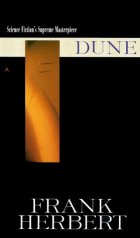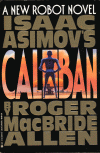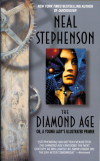A while back a co-worker of mine gave me A Canticle for Leibowitz by Walter M. Miller. It sat on a shelf for a few years until I recently got around to reading it. I didn’t really know much about the book when it was given to me, but since then I’ve seen it on a few “Best of SF” book lists. It also won the Hugo Award for best science fiction novel. There are three parts to the book, each taking place a few hundred years apart.
The setting of the first part takes begins in the 26th century. At some unspecified time in the past, the world all but destroyed in a global nuclear war. Almost all the secrets of modern technology were lost in what would later be described as a purge. The mob of humans left alive banded together to destroy all knowledge that could lead to another nuclear war. There were book burnings and hangings of scientists. The story follows group of monks that have built an abbey in the desert to house the Memorabilia as they refer to books, technical manuals, and other bits of information that are uncovered over time. Their patron is a man by the name of Leibowitz, who was hung during the purge just after the first nuclear war.
The book opens with Brother Francis out in the desert on a vigil of solitude for Lent. He encounters a wanderer that through some odd circumstances leads to the discovery of a fallout shelter. He finds a box full of items, two of which are what appear to be a grocery list and an electrical schematic. Francis excited because he suspects the box belonged to Liebowitz. Once the abbot heard of the events, he was more interested in the pilgrim. Rumors take off, and eventually people claim that the wanderer was actually Leibowitz. I kept looking forward to finding out what was actually in the fallout shelter, but that mystery was basically shoved into the background.
Miller instead focuses on the politics of how New Rome scrutinizes the account of Francis and the “Wanderer.” I was a bit disturbed by the cruelty of the abbot and inquisitor. Francis is eventually deemed credible, but not before quite an ordeal. The rest of this first part follows Francis in his appointment to the copy room and eventual creation of an artwork based on a “Circuit Diagram by Leibowitz.”
The second part starts at year 3174 with the scientific community gaining some momentum. A few new discoveries have taken place, and word of the cache of documents at the abbey of Leibowitz catches the attention of one of the best scientists. He puts in a request to have a good portion of the Memorabilia sent to New Rome for examination, but the reigning abbot refuses on grounds of keeping the records safe.
The third part is starts at year 3781 with humanity having many space colonies. They rediscovered nuclear power, and with that nuclear weapons. The threat of nuclear war is very strong. The order of monks is prepared to send the good portion of the Memorabilia away from Earth if war breaks out, because New Rome is certain the next war will utterly destroy the world. War does resurface, and the abbey becomes the focal point of a humanitarian effort for fallout victims.
Most of this last section is a commentary on euthanasia. The current abbot learns that one of the aid workers might hand out “red tickets,” government sanctioned approval euthanasia. They are good for entrance to a mercy camp for those deemed to be the worst cases. Otherwise, they are doomed to suffer a horrible and painful death by radiation sickness. The abbot makes the worker promise not to hand one out or else he will not allow the aid workers to use the abbey. Of course the worker breaks his promise and the abbot flips out when he sees a mother and daughter walking away with red ticket. It becomes his mission to convince the mother not to take the child to the camp. Eventually she does goes anyway, but not without a strong fight by the abbot.
As a science fiction novel, I found this book to be a disappointment. There were some minor elements of SF, but mostly the focus was on church policies and political struggles. I had a very hard time relating to the main characters, because I couldn’t understand why anyone would put up with such torture. I don’t see why serving a higher power needs to involve so much pain and suffering. Overall, the book was quite a bit depressing and frustrating. I kept wanting it to get better, but it never did.



